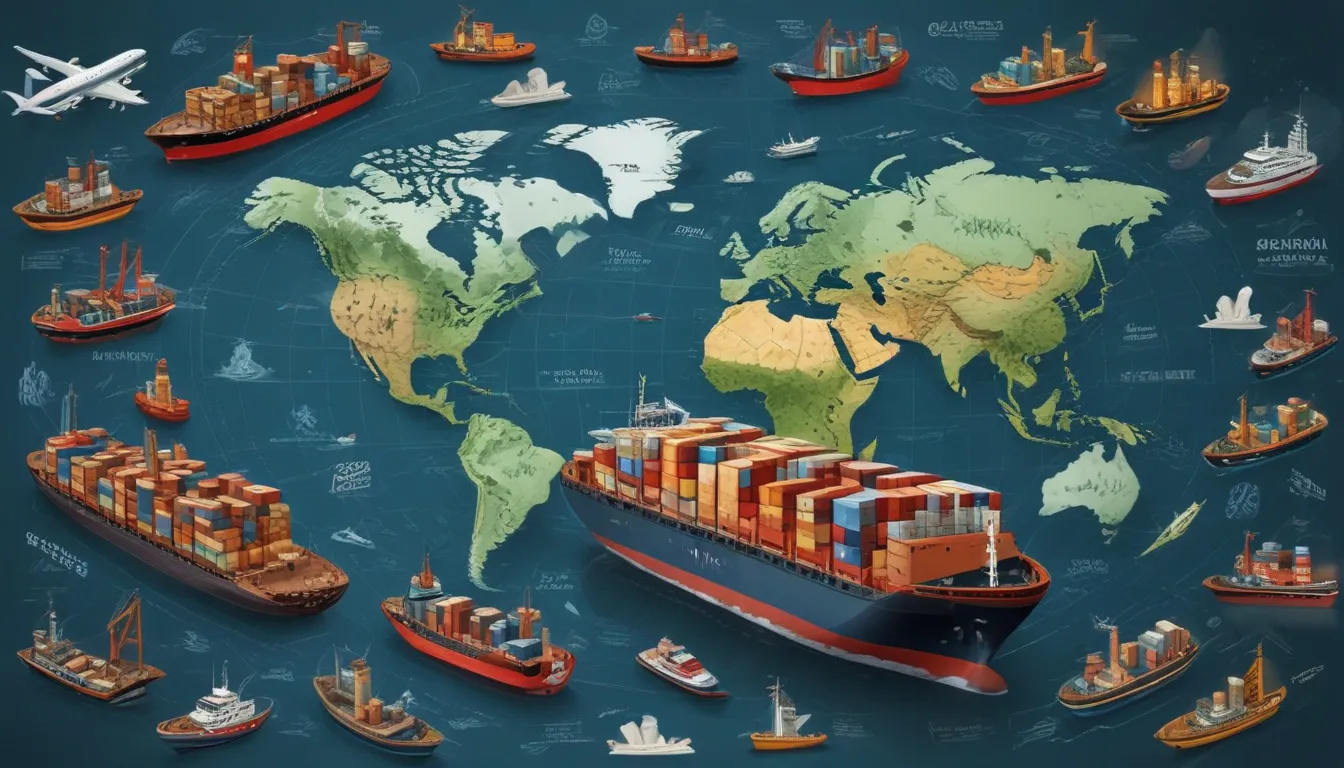A Note About Images: The images used in our articles are for illustration purposes only and may not exactly match the content. They are meant to engage readers, but the text should be relied upon for accurate information.
In today’s interconnected world, global trade patterns have a profound impact on the global economy, shaping industries, influencing economic growth, and driving globalization. The exchange of goods and services across borders is a dynamic and complex process, with countless factors influencing the flow and direction of trade. From historical trade routes like the Silk Road to the dominance of countries like China and the US in global trade, there is much to learn about the fascinating dynamics that shape the interconnectedness of nations and their economies.
The Silk Road: Connecting Continents and Cultures
The ancient trade route known as the Silk Road spanned over 4,000 miles, connecting Asia, Europe, and Africa. This historic trade network played a vital role in shaping global trade patterns, facilitating the exchange of goods, ideas, and cultures across vast distances. The Silk Road serves as a testament to the transformative power of trade in bridging cultures and fostering economic growth.
China: The Global Export Leader
China has emerged as the largest exporter in the world, thanks to its massive manufacturing capacity and diverse range of products. The country’s dominance in global trade has significantly impacted trade patterns, leading to a shift in the global economic landscape. China’s role as a major exporter highlights its influence on global trade dynamics.
The USA: Leading Importer of Goods
As the world’s wealthiest nation, the United States holds the top spot as the largest importer of goods. The country’s consumption-driven economy heavily relies on imports to meet consumer and industrial demands. This reliance on imports has profound effects on global trade patterns and influences the trading activities of various countries worldwide.
United States-China Trade Relationship: A Significant Force
The trading relationship between the United States and China is one of the largest bilateral trade relationships in the world. These economic powerhouses engage in a wide range of trade activities, spanning from consumer goods to raw materials. The intricate trade patterns between the US and China have a significant impact on global markets and shape the global economic landscape.
The European Union: Largest Internal Market
With 27 member states, the European Union boasts the largest internal market globally. This vast market allows for the free movement of goods, services, capital, and people, contributing to robust trade patterns within the EU and with other global economies. The EU’s internal market plays a crucial role in shaping global trade dynamics.
Emerging Economies: Key Players in Global Trade
Countries like India, Brazil, and South Africa, among others, are considered emerging economies and have become essential players in global trade patterns. Their expanding industries, growing consumer markets, and rising middle-class populations have contributed to shifting trade dynamics and created new opportunities for trade partnerships. Emerging economies play a significant role in shaping the future of global trade.
E-commerce Revolution: Transforming Trade Patterns
The rise of e-commerce has revolutionized traditional trade patterns, opening up new avenues for global commerce. Online platforms have enabled businesses of all sizes to access global markets, breaking down geographical barriers, and transforming the way goods and services are traded. E-commerce’s influence on global trade patterns highlights the importance of adapting to evolving technologies in the business world.
Interconnected Global Supply Chains
In today’s interconnected world, global supply chains have become increasingly complex and interconnected. Raw materials sourced from one country may be processed in another, assembled in a different country, and then sold globally. This interdependence has transformed global trade patterns, making countries reliant on each other for various stages of production. Understanding global supply chains is essential for navigating the complexities of modern trade.
The Impact of Trade Agreements
Trade agreements, such as NAFTA and CPTPP, play a significant role in shaping global trade patterns. These agreements aim to reduce trade barriers, increase market access, and foster economic cooperation between countries. By influencing the flow of goods and services across borders, trade agreements have a substantial impact on global trade dynamics.
In conclusion, global trade patterns are a critical driver of economic growth and global interconnectedness. Understanding the complexities and dynamics of international trade is essential for businesses, policymakers, and individuals navigating the global marketplace. From ancient trade routes to emerging economies and e-commerce, the evolution of global trade patterns continues to shape the world economy. As we embrace technological advancements and shifting geopolitical landscapes, staying informed about global trade patterns is key to thriving in an increasingly interconnected world.
FAQs
-
What are trade patterns?
Trade patterns refer to the way goods and services move between countries, regions, and markets. They encompass the types of products traded, the volume of trade, the direction of trade flows, and the countries or regions involved. -
How do trade patterns affect economies?
Trade patterns have a significant impact on national and global economies. They can drive economic growth, create jobs, foster innovation, and enhance competitiveness. Disruptions in trade patterns can lead to economic downturns, job losses, and market volatility. -
What factors influence global trade patterns?
Several factors influence global trade patterns, including government policies, trade agreements, exchange rates, transportation infrastructure, technological advancements, consumer demand, and geopolitical dynamics. -
Why is it important to understand global trade patterns?
Understanding global trade patterns is crucial for businesses, policymakers, and individuals. It enables businesses to identify new market opportunities, optimize supply chains, and make informed decisions. Policymakers can shape trade policies to foster economic development, and individuals can adapt their skills to match market demands. -
How do global trade patterns impact developing countries?
Global trade patterns can have both positive and negative impacts on developing countries. Trade can stimulate economic growth, attract foreign investment, and provide access to new markets. Challenges such as trade imbalances, unfair competition, and vulnerability to global economic fluctuations also affect developing countries.
Our commitment to delivering accurate and engaging content underscores our dedication to providing valuable information to our readers. Each fact on this site is contributed by real users, ensuring a diverse range of insights and information. Our meticulous editorial review process guarantees that the facts we share are not only fascinating but also credible. Trust in our commitment to quality and authenticity as you explore and learn with us.






